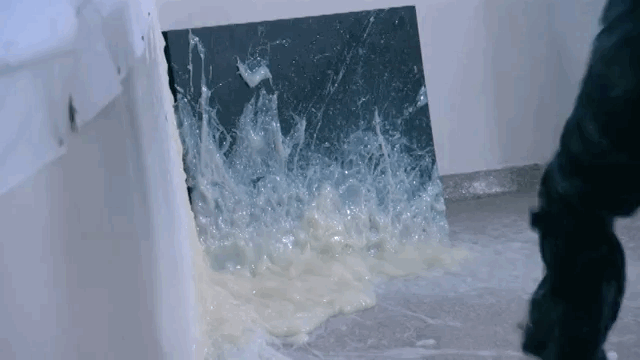I’m a fan of Matthew Barney’s films but I also have the ability to step outside of that fandom and see how his work is an acquired taste. I get it. I would never try to rally the troops or convert someone. This entry isn’t for everyone. Matthew Barney isn’t someone you just blindly delve in to (he’s said himself that his work isn’t for everyone). I just love
The Order and wanted to share my thoughts...
When it comes to what folks consider to be “pure cinema” (the criteria is very vague and always changing) - I think Barney’s work deserves to be mentioned. Just on a purely visual level…
 |
| Cremaster Cycle |
 |
| Drawing Restraint 9 |
 |
| River Of Fundament |
 |
| Redoubt |
Barney also has some serious subconscious cinematic connections to everyone from Busby Berkeley…
 |
| Night World / The Order |
To Leos Carax…
 |
| Cremaster 1 / Annette |
Matthew Barney is a sculptor/exhibition artist first and a filmmaker second (this probably explains why the “plot” in all of his films comes second and sometimes third). I think the only reason he ended up making movies & filming moving images is because his sculptures & exhibitions got so elaborate that they almost became theatrical. Barney often puts his body in to his work (he was an Athlete as a teenager and maintains an impressive physique to this day). His physicality became a part of his art but you’d never know that just from looking at hit…
Athletics play a huge part in a lot of Barney's films...
 |
Super Sunday: A History Of The Super Bowl / Cremaster 1
|
 |
They Call It Pro Football / Cremaster 2
|
 |
1976-09-27 MN Halftime Highlights / Cremaster 1
|
 |
They Call It Pro Football / Cremaster 1
|
 |
Saviors, Saints and Sinners / Cremaster 1
|
 |
The Beginning 1962-65 / The Order
|
 |
The Beginning 1962-65 / The Order
|
 |
NFL Films: 1966-68 / The Order
|
|
 |
NFL Films: 1966-68 / The Order
|
 |
A Glorious Game / The Order
|
 |
A Glorious Game / The Order
|
Now…if you’ve spent time in a studio, wood shop, model shop, etc - you probably would know it takes some serious physical strength to produce some of his pieces…
His work got too big for a gallery. The next logical step was the moving image.
Barney’s progression from exhibition artist to filmmaker is similar to David Lynch. Lynch transitioned from painting to filmmaking because he felt limited. It’s almost like he wanted his painting to move. His early films showed this…
 |
| Six Figures Getting Sick |
Lynch continues to experiment with moving paintings…
 |
| Pretty As A Picture: The Art Of David Lynch |
Naturally this goes back to Lynch's ongoing ties to Bunuel:
 |
Un Chien Andalou /| Pretty As A Picture: The Art Of David Lynch |
|
The Order is an isolated segment from a feature film (
Cremaster 3) that’s part of a larger series
(The Cremaster Cycle). Like I said earlier, plot comes second with Matthew Barney and
The Order is no exception.
The Order, set in the Guggenheim, is a massive multimedia project that fuse performance art, video, and sculptural installation that explores historical narratives, the politics of the body, and the physicality and eroticism of sport.
But it’s hard to catch a lot of that on the first (or second) viewing when faced with imagery like this:
 |
The Order
|
 |
The Order
|
To some degree, all of Barney’s work is an abstracted look about the creative process. The section/“level” where we watch Richard Serra (another artist that works on a large scale) is the most fascinating and almost serves as a precursor to Barney’s most recent feature; Redoubt:
 |
The Order
|
The Order, which clocks in at under an hour is the perfect film to watch over and over (you catch something new every time).

.gif)







































































